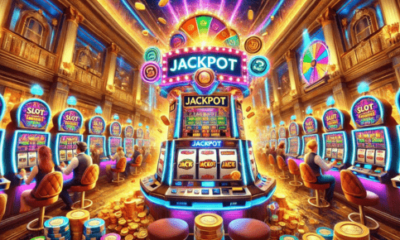Game
Press Play: How Video Game Music Evolved from Beeps to Masterpieces
If you close your eyes and hear the chiptune notes of Super Mario Bros. or the haunting melodies of The Legend of Zelda, you’re not alone. Video game music has not only carved its own legacy but has grown into one of the most innovative and emotionally powerful forms of modern composition.
The 8-Bit Era: Making Magic with Limitations
In the early days of gaming, composers worked with major limitations—hardware could only handle a few sound channels at a time. Yet even within these restrictions, they created iconic tracks that are instantly recognizable decades later.
Composers like Koji Kondo (Mario, Zelda) and Nobuo Uematsu (Final Fantasy) turned minimalistic tones into emotionally resonant experiences. These themes weren’t just background noise—they became part of the game’s identity.
The Rise of Orchestration
By the late 1990s and early 2000s, gaming consoles like the PlayStation 2 and Xbox made it possible to incorporate full orchestral scores and licensed music. This gave rise to cinematic experiences where sound and story blended seamlessly.
Games such as Halo, Shadow of the Colossus, and Final Fantasy X showcased how music could elevate gameplay from mechanical action to something closer to art.
Today, it’s not unusual for video game scores to be recorded by full symphonies or performed live in concert halls. The respect for game composers has grown tremendously, and some even rival their film counterparts in popularity.
Some modern games and digital platforms—even ones like livo88 in the interactive gaming space—now invest in tailored audio design to enhance player experience, recognizing how critical sound has become to immersion.
Adaptive Sound: Music That Reacts to You
Perhaps the most exciting innovation in video game music is interactivity. Unlike movies, games change depending on what players do—so why shouldn’t the music follow suit?
Dynamic scores, also called adaptive music, shift in tone and intensity based on your in-game actions. Games like The Last of Us, Red Dead Redemption 2, and Celeste use real-time adjustments to mirror a player’s stress, success, or emotional journey.
This creates a deep connection between sound and story—often without the player consciously realizing it.
From Background to Foreground
We’ve come a long way from the bleeps and bloops of early arcades. Today’s gamers often recognize and appreciate the complexity of game music. Soundtracks are available on streaming platforms, and vinyl releases of game scores sell out quickly.
Even indie games—such as Journey or Hades—prove that thoughtful sound design can rival big-budget productions.
Video game music has become a field of its own, rich with innovation, nostalgia, and emotional power. Whether you’re battling bosses, exploring vast open worlds, or logging into a digital lobby like livo88, chances are the soundtrack is doing more than you think.
















You must be logged in to post a comment Login